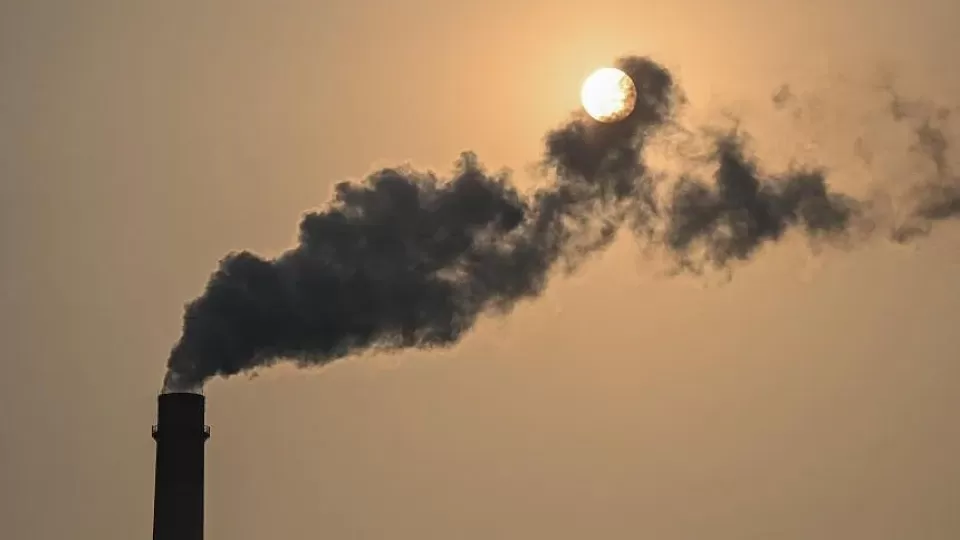February 27, 2023
SINGAPORE – China issued approval permits to build coal power capacity equivalent to two large coal power plants per week in 2022, driven in part by surging growth in electricity demand triggered by last year’s heatwave and record drought, a report published on Monday showed.
The jump in approvals, paradoxically, comes as China is dramatically ramping up investment in renewable energy, especially wind and solar, which the government hopes will meet growing energy needs and lead to less coal use.
Approvals were given to build 106 gigawatts (GW) of new capacity – roughly nine times Singapore’s total power generation capacity – the highest number of permit approvals since 2015. The new capacity, if it was all built, would equate to about 106 power plants of 1GW each, the average size of a coal plant.
Coal power capacity starting construction in 2022 totalled 50GW. This was six times as much as that for the rest of the world combined and was also a more than 50 per cent increase from 2021, said the report.
“Many of these projects had their permits fast-tracked and moved to construction in a matter of months,” said the authors of the report by the Centre for Research on Energy and Clean Air (Crea), an international research organisation registered in Finland with staff across Asia and Europe, and Global Energy Monitor, a non-governmental organisation that tracks global energy projects.
The surge in approvals challenges Chinese President Xi Jinping’s pledge to reduce coal consumption during the 2026 to 2030 period and for the nation to reach net zero emissions by 2060.
China is by far the world’s largest producer and consumer of coal, the single largest source of planet-warming carbon dioxide (CO2). The nation is also the top greenhouse gas polluter and has the world’s largest fleet of coal-fired power plants – so any new additions raise the risk of even greater emissions and air pollution.
For example, a new 1GW coal plant running at the average utilisation rate of Chinese coal plants will emit about 3.2 million tonnes of CO2 per year – about the annual emissions of 695,000 cars.
The average utilisation rate of coal plants in China is just over 50 per cent.
Mr Lauri Myllyvirta, lead analyst for Crea, said officials in a number of provinces, including Guangdong, Jiangsu and Anhui, have been pushing for new coal plants to meet electricity needs and support power grids.
“The reason the new power plants are being built is the increase in momentary peak loads. Without investment in electricity storage, solar and wind power don’t do much to ensure that there is sufficient generation capacity available when these peak loads happen,” he told The Straits Times, adding that grids also need more investment to improve connections between provinces.
He said 2022’s summer heatwave and drought led to a surge in short-term power demand.
“The increase in peak loads combined with the historic drought and heatwave. This led to a drop in hydropower generation during the hottest weeks of the year, when electricity demand for cooling was high,” said Mr Myllyvirta.
Coal-power plant approvals jumped in the second half of 2022 after the heatwave and drought. But ultimately, the building spree could prove wasteful.
“Building coal power plants to cover peak loads just a few days or weeks per year is a very costly way to address this issue, and even more so because the utilisation and lifetime of the plants will be limited by China’s carbon targets,” Mr Myllyvirta added.
China’s rapid roll-out of new wind and solar power capacity will also undermine the long-term need for hundreds of new coal power plants, he said.
In 2022, China added 125GW of new wind and solar capacity, and a further 165GW of wind and solar capacity is targeted for 2023. Mr Myllyvirta said China could reach its 2030 green energy target of 1,200GW by 2025 or 2026.
China is on track to begin meeting all of its electricity demand growth from clean energy starting in 2024. Ultimately, this means “there won’t be space for annual power generation from coal to increase”, Mr Myllyvirta said.
He added that the rapid additions of new green energy capacity mean China looks to be on track to start reducing coal consumption after 2025 or even sooner. This could be achieved by lowering the utilisation rate of coal power plants further, meaning that they operate for shorter periods and use less coal.
“The concern, however, is that adding hundreds of new coal power plants creates a strong interest for local governments and power companies to continue coal use and avoid a rapid phase-out. China’s targeted rate of emissions reductions after the peak is an open question, and these kinds of vested interests make it harder to arrive at ambitious targets,” he said.


